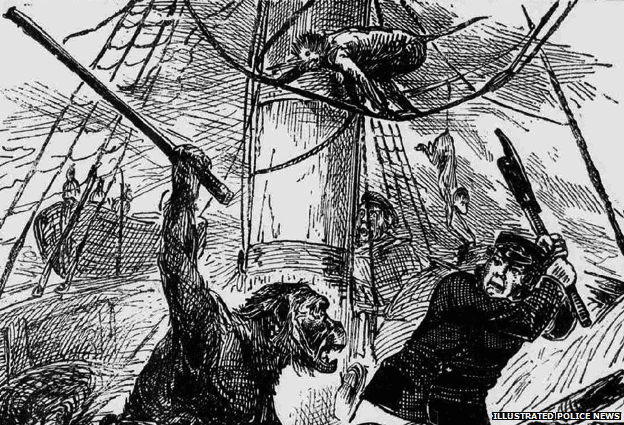
Take one ship. Add a consignment of ferocious beasts in flimsy containers. Send it in to a stormy ocean and stand well back. Author Jeremy Clay tells the extraordinary story of horror on the high seas.
She was so late, they had given her up as lost. Another ship swallowed whole by the ocean on the perilous crossing to America.
Then one day in January 1890, with all hope gone, the British barque Margaret limped in to the harbour at Boston, her captain and crew wearing the haunted expressions of men who would never need to be told that worse things happen at sea.
Their story was a singular mix of Noah's ark and the mutiny on the Bounty. To Lloyd's Weekly Newspaper it was "the most remarkable voyage that has been chronicled outside the realms of fiction for a long time". Captain Sargent, an expert in understatement, simply said it was an experience he didn't wish to repeat.
The Margaret had slipped out of port on the west coast of Africa with a full cargo and a couple of stowaways, who quickly found themselves wishing they'd crept on to a different boat.
In the hold was a consignment of live animals being shipped from Durban to a museum in the States: 400 cockatoos and parrots, 12 snakes, some monkeys, a gorilla, an orangutan and two crocodiles.
Uh-oh.
First to die were the birds, starved when the ship's swarming rats scoffed all the corn that had been provided as feed. The raging storm the Margaret ran in to set in motion the chain of events that accounted for most of the rest of this floating menagerie.
As the ship was tossed about on wind-whipped waves, the snakes and crocodiles broke free of their crates and invaded the crew's quarters, forcing the sailors to seek shelter in the cabin for days on end.
"These reptiles, along with the rats, kept up a continual warfare until the surviving crocodile killed the last snake," said the paper, "and completed the chain of vengeance by being killed by some of the cargo shifting and falling on it".
As the snakes and crocodiles battled for supremacy, the monkeys also broke free and took to the rigging, where all efforts to dislodge or shoo them proved fruitless, until the crashing sea did the job, sweeping most of them away, along with sections of the masts.
The most troublesome passenger of all was the gorilla - 5ft (142cm) tall and understandably dismayed at his changing circumstances.
He'd been secured in a stout wooden box, until he forced off the lid and clambered out.
"Having obtained possession of an iron bar, he commanded all objects within 10 feet of where he was chained," reported the Devizes and Wiltshire Gazette. "With this formidable truncheon he threatened to brain every sailor who came within range. The cook one day unwarily approaching heard the bar whistling through the air and ducked, but not in time to save his head, which was half scalped."
Stunned by the blow, the cook was then seized by the gorilla which "would doubtless have throttled him had not a sailor come up with a hatchet and stunned the monster".
When the ship and its weary crew finally docked, the museum staff arrived to collect their cargo. Whatever space they had allocated for their display of wildlife, it was far too much. All that was left to hand over was the gorilla, three monkeys and four parrots.
Source: www.bbc.com

